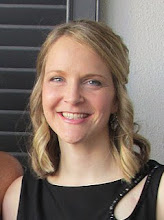 |
| This illustrates both my level of exhaustion and my obsession with pugs. |
While “probably cause” had a better ring to it for the title of this post, I’m afraid that would be premature at best, but I’ll gladly take a new potential cause for my debilitating fatigue any day.
After being diagnosed with hypersomnia a few months ago, I had a lumbar puncture (spinal tap) to determine whether or not my spinal fluid contains an elevated level of a substance that acts like a sedative. In patients with elevated levels, my doctor is experimenting with using a drug called flumazenil to counteract its effect. He has seen some significant success among his patients. Having prescribed flumazenil for about 100 patients with elevated levels of the substance, he reports a 50% drug refill rate. This stuff is expensive and not covered by insurance, so people aren’t refilling it unless it works.
I learned on Wednesday that I do indeed have an elevated level of this “sleepy juice” and could not have been happier. Each new finding, each possible treatment offers a glimmer of hope that I can feel better.
Flumazenil is labeled for use as an injection to bring people out of sedation and treat overdoses of drugs like Valium. Though long-term efficacy and safety of treating hypersomnia has not been evaluated, the doctors at the Emory Sleep Center completed a small clinical trial in 2012. Below is an informative excerpt from the abstract.
The term 'hypersomnia' describes a group of symptoms that includes severe daytime sleepiness and sleeping long periods of time (more than 10 hours per night). Sometimes, hypersomnia is caused by a problem with the quality of sleep occurring at night, for instance when nighttime sleep is disrupted by frequent breathing pauses. In other cases, however, hypersomnia occurs even when nighttime sleep is of good quality. These cases of hypersomnia are presumed to be a symptom of brain dysfunction, and so are referred to as hypersomnias of central (i.e., brain) origin, or primary hypersomnias.
The causes of most of these primary hypersomnias are not known. However, our group has recently identified a problem with the major brain chemical responsible for sedation, known as GABA. In a subset of our hypersomnia patients, there is a naturally-occurring substance that causes the GABA receptor to be hyperactive. In essence, it is as though these patients are chronically medicated with Valium (or Xanax or alcohol, all substances that act through the GABA system), even though they do not take these medications.
I’ve been using Adderall to help me wake up in the mornings, which has definitely helped reduce the extent of my oversleeping and evening ritual of dreading yet another miserably exhausting day ahead. However, Adderall is a stimulant and takes time to start working. I wake up to take the pills at 5am, then go back to sleep and wake again with my alarm at 6:30 or 7. It also makes me feel jittery in the mornings and can’t be taken again later in the day without keeping me up at night. While it has been cause for great celebration and hope, it is not a perfect solution.
Flumazenil is not a stimulant. My doctor has described the difference with this analogy. If a car is driving too slowly, it may be sped up by applying the gas pedal, which is how a stimulant works. On the other hand, if the car’s parking brake is engaged, the gas pedal is not going to provide much help. Flumazenil removes the brakes, speeding the car up by the absence of something de-energizing instead of the addition of something energizing.
Flumazenil is now available in a small lozenge that dissolves under the tongue and a topical cream applied to the skin. I just took my first lozenge an hour ago. I think it will take time to evaluate the results, but I am encouraged to have been able to sit and write this post without falling asleep or dismissing the effort as overwhelmingly cumbersome. As you may have noticed from my increasingly infrequent posting, this is not something to take for granted.










